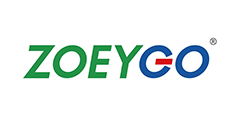How AC-DC Converters Evolved

An AC-DC converter is a device that converts alternating current (AC) to direct current (DC). This conversion is essential in electronic devices that require a steady supply of DC voltage, such as computers, smartphones, and power tools.
There are two types of AC-DC Converters: unregulated and regulated. Unregulated AC-DC converters are simpler and cheaper but provide an unstable output voltage that varies with changes in input voltage and load. Regulated AC-DC converters, on the other hand, provide a stable output voltage that is independent of input voltage and load. Regulated AC-DC converters are widely used in modern electronics, especially in high-performance applications where precise and reliable power is critical.
The basic principle behind an AC-DC converter is rectification, which involves converting AC voltage to DC voltage. The rectification process is achieved through a diode or a group of diodes arranged in a bridge configuration. The AC voltage is fed through the diodes, which only allow current to flow in one direction, effectively converting the AC voltage to a pulsating DC voltage.
The output of the rectifier is still not suitable for electronic devices as it contains ripple, which is a fluctuation in the DC voltage caused by the unfiltered AC component in the rectified output. To remove the ripple and obtain a steady DC voltage, a smoothing capacitor is added to the circuit. The capacitor stores charge when the voltage is high and releases it when the voltage drops, effectively reducing the ripple and producing a stable DC voltage.

Fig.1
While the rectification and smoothing stages produce a DC voltage, it is still not regulated, and variations in input voltage and load can cause the output voltage to fluctuate. To produce a stable DC voltage, an AC-DC converter can be designed with a regulator stage that monitors the output voltage and adjusts it as necessary.
There are various types of regulator circuits used in AC-DC converters, such as linear regulators, switch-mode regulators, and resonant regulators. Linear regulators are simple and reliable but are inefficient and generate heat. Switch-mode regulators are more efficient and generate less heat but are more complex and require additional components. Resonant regulators are relatively new and provide higher efficiency and lower EMI (electromagnetic interference) but are more expensive and require careful tuning.
The choice of regulator circuit depends on the specific application and the desired trade-offs between cost, efficiency, reliability, and complexity. In addition to the regulator circuit, AC-DC converters may also include other components such as protection circuits, feedback circuits, and filtering circuits, depending on the requirements of the application.

Fig.2
AC-DC converters are widely used in various applications, such as power supplies, motor drives, lighting, and renewable energy systems. In power supplies, AC-DC converters are used to convert mains voltage to a lower DC voltage that can be used to power electronic devices. In motor drives, AC-DC converters are used to convert DC voltage to AC voltage to control the speed and direction of motors. In lighting, AC-DC converters are used to convert mains voltage to low-voltage DC voltage that can be used to power LED lights. In renewable energy systems, AC-DC converters are used to convert DC voltage from solar panels or wind turbines to AC voltage that can be used to power homes or businesses.
AC-DC converters are critical components in modern electronics and play an essential role in enabling the efficient and reliable use of electrical energy. With advances in semiconductor technology and the increasing demand for energy-efficient and environmentally friendly products, the development of AC-DC converters is expected to continue, driving innovation and growth in the power electronics industry.
- +1 Like
- Add to Favorites
Recommend
This document is provided by Sekorm Platform for VIP exclusive service. The copyright is owned by Sekorm. Without authorization, any medias, websites or individual are not allowed to reprint. When authorizing the reprint, the link of www.sekorm.com must be indicated.


























































































































































































































































































































































































































































































































































































































































































































































































































































































































